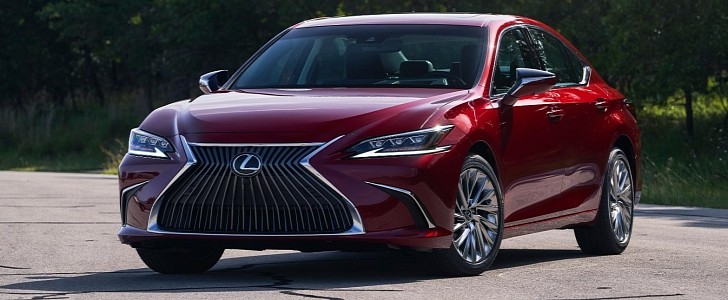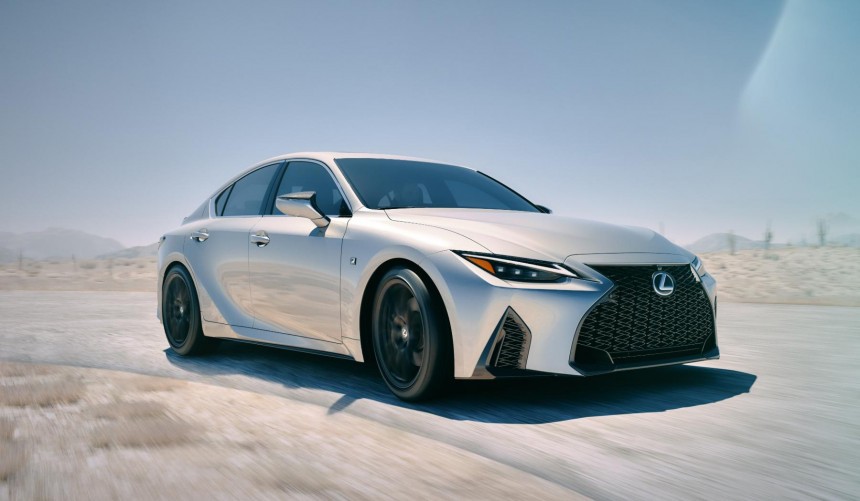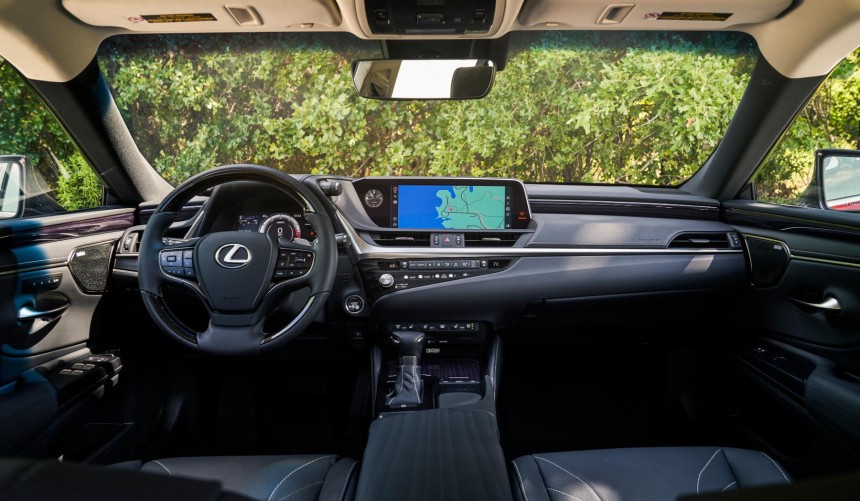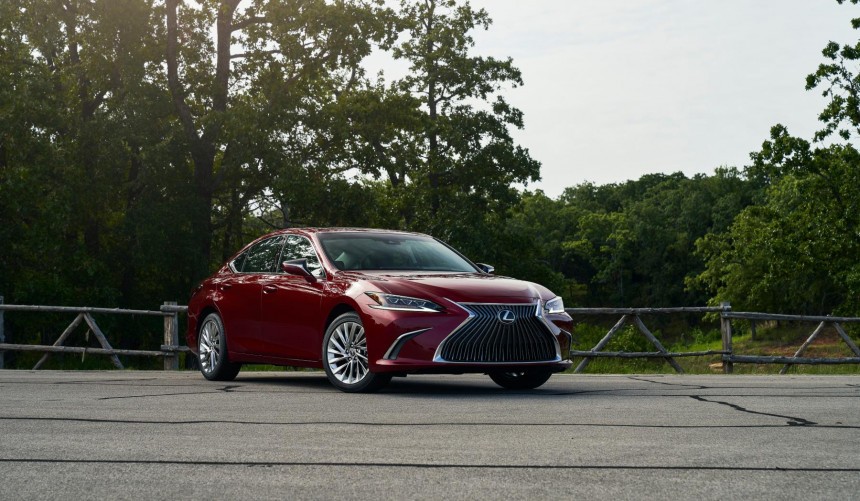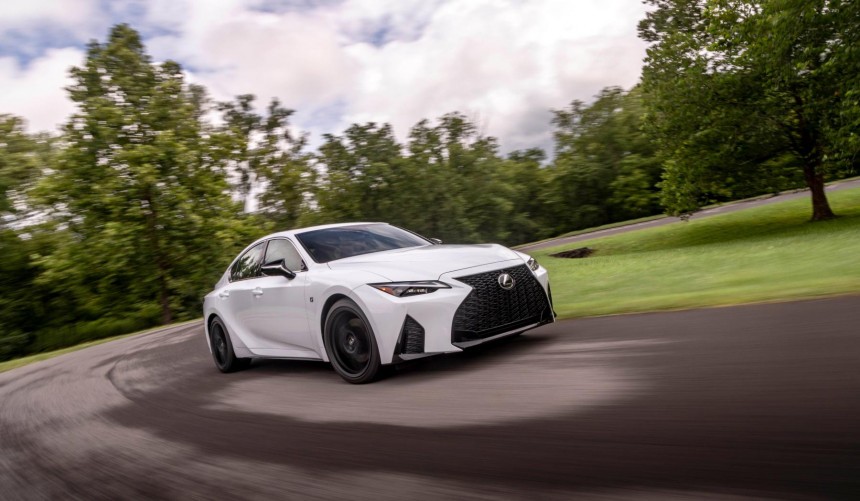Those looking to buy a new sedan that delivers a high level of comfort and reliability for a competitive price should seriously consider a Lexus. The IS and ES models, in particular, have similar base prices but are tailored for different types of customers.
Toyota’s luxury brand was born in September 1989 to compete against Honda’s Acura and Nissan’s Infinity premium brands, with the latter officially launching only two months after Lexus.
The first vehicle launched under the Lexus nameplate was the LS which quickly became extremely popular, especially in the U.S., where it was the best-selling luxury sedan for many years. The LS' success prompted Toyota to expand the Lexus lineup, which now features a variety of vehicles covering most segments.
The LS remains the brand’s flagship sedan and is joined by two smaller siblings, the IS and ES. They both have a starting price of around $40,000, but each has its own personality and is designed for different types of customers.
For those of you who are not familiar with the two models, the most obvious difference is the size. The IS is a compact sedan while the ES is a larger, midsize model. The former is 185.4 inches (4,710 mm) long and 72.4 inches (1,840 mm) wide, while the latter is about 10 inches (25.4 cm) longer and 1 inch (2.5 cm) wider.
That makes the IS easier to maneuver in busy urban environments but undermines its cabin and trunk space. The ES provides 16.7 cubic feet (472.9 liters) of cargo space as opposed to the 10.8 cubic feet (305.8 liters) offered by the IS, not to mention plenty of legroom for backseat passengers.
If these two characteristics are more important than maneuverability, then the midsize sedan deserves more attention. It also offers a better interior design which, to us, feels more up-to-date and ergonomic than that of the IS.
Another less obvious difference but one that influences the way these two sedans drive and the interior space they offer is the platform on which they are built. The ES uses Toyota's GA-K transverse engine FWD platform (shared with the Avalon) while the sportier IS is built on the N platform which was developed for RWD longitudinal engine aplications. Both architectures support AWD drivetrains, but are fundamentally different.
When it comes to performance, the 2021 ES offers a choice of three powertrains: the ES 250 is powered by a 203-hp 2.5-liter inline-four and comes with all-wheel drive as standard; the ES 350 packs a 302-hp 3.5-liter V6 mated to an eight-speed automatic that sends power to the front wheels; finally, the ES 350h uses the same four-cylinder as the ES 250, but the ICE is assisted by a hybrid architecture for a total system power of 215 hp.
The smaller and lighter IS packs more punch, being available with either a 241-hp 2.0-liter turbocharged four-cylinder for the IS 300 trim or a 3.5-liter V6 that delivers 260 hp on IS 300 4WD models and 311 hp on the IS 350 F Sport or IS 350 F Sport AWD. Lexus also recently revealed the 2022 IS 500 F Sport, which will be available with a 472-hp V8.
Considering these figures, the IS should be the obvious choice if you like sharp acceleration and a sportier driving experience, yet its bigger sibling won’t disappoint in terms of performance especially when equipped with the V6. It’s also available with a hybrid powertrain for those who put a higher value on efficiency.
This brings us to fuel economy, where you would expect the larger, non-hybrid ES models to suffer; surprisingly, this is not the case. They have a combined estimate of 28 MPG (8.4 liters per 100 km) for the ES 250 trims and between 25 and 26 MPG (9.4-9.0 liters per 100 km) for the ES 350 models.
On the other hand, the compact sedan offers a combined estimate of 25 MPG (9.4 liters per 100 km) for the inline-four-powered IS 300 model and between 22 and 23 MPG (10.6-10.2 liters per 100 km) for the V6 models.
Of course, the undisputed champion of fuel efficiency is the ES 300h’s hybrid powertrain that has a combined estimate of 44 MPG (5.3 liters per 100 km).
In the end, deciding which Lexus sedan is better for you depends solely on your priorities. Both are awesome-looking, well-built, and benefit from Toyota’s renowned reliability.
The ES is a lot more versatile and practical, being the perfect family-oriented sedan. It provides more room for both passengers and cargo, a decent amount of power on all available trims, and good fuel economy, especially on the hybrid models.
If you’re a bachelor or already own a family-oriented vehicle and want to buy a nimble, performance-focused sedan, then a higher-end IS model is obviously the better choice.
The first vehicle launched under the Lexus nameplate was the LS which quickly became extremely popular, especially in the U.S., where it was the best-selling luxury sedan for many years. The LS' success prompted Toyota to expand the Lexus lineup, which now features a variety of vehicles covering most segments.
The LS remains the brand’s flagship sedan and is joined by two smaller siblings, the IS and ES. They both have a starting price of around $40,000, but each has its own personality and is designed for different types of customers.
That makes the IS easier to maneuver in busy urban environments but undermines its cabin and trunk space. The ES provides 16.7 cubic feet (472.9 liters) of cargo space as opposed to the 10.8 cubic feet (305.8 liters) offered by the IS, not to mention plenty of legroom for backseat passengers.
If these two characteristics are more important than maneuverability, then the midsize sedan deserves more attention. It also offers a better interior design which, to us, feels more up-to-date and ergonomic than that of the IS.
Another less obvious difference but one that influences the way these two sedans drive and the interior space they offer is the platform on which they are built. The ES uses Toyota's GA-K transverse engine FWD platform (shared with the Avalon) while the sportier IS is built on the N platform which was developed for RWD longitudinal engine aplications. Both architectures support AWD drivetrains, but are fundamentally different.
The smaller and lighter IS packs more punch, being available with either a 241-hp 2.0-liter turbocharged four-cylinder for the IS 300 trim or a 3.5-liter V6 that delivers 260 hp on IS 300 4WD models and 311 hp on the IS 350 F Sport or IS 350 F Sport AWD. Lexus also recently revealed the 2022 IS 500 F Sport, which will be available with a 472-hp V8.
Considering these figures, the IS should be the obvious choice if you like sharp acceleration and a sportier driving experience, yet its bigger sibling won’t disappoint in terms of performance especially when equipped with the V6. It’s also available with a hybrid powertrain for those who put a higher value on efficiency.
On the other hand, the compact sedan offers a combined estimate of 25 MPG (9.4 liters per 100 km) for the inline-four-powered IS 300 model and between 22 and 23 MPG (10.6-10.2 liters per 100 km) for the V6 models.
Of course, the undisputed champion of fuel efficiency is the ES 300h’s hybrid powertrain that has a combined estimate of 44 MPG (5.3 liters per 100 km).
The ES is a lot more versatile and practical, being the perfect family-oriented sedan. It provides more room for both passengers and cargo, a decent amount of power on all available trims, and good fuel economy, especially on the hybrid models.
If you’re a bachelor or already own a family-oriented vehicle and want to buy a nimble, performance-focused sedan, then a higher-end IS model is obviously the better choice.
